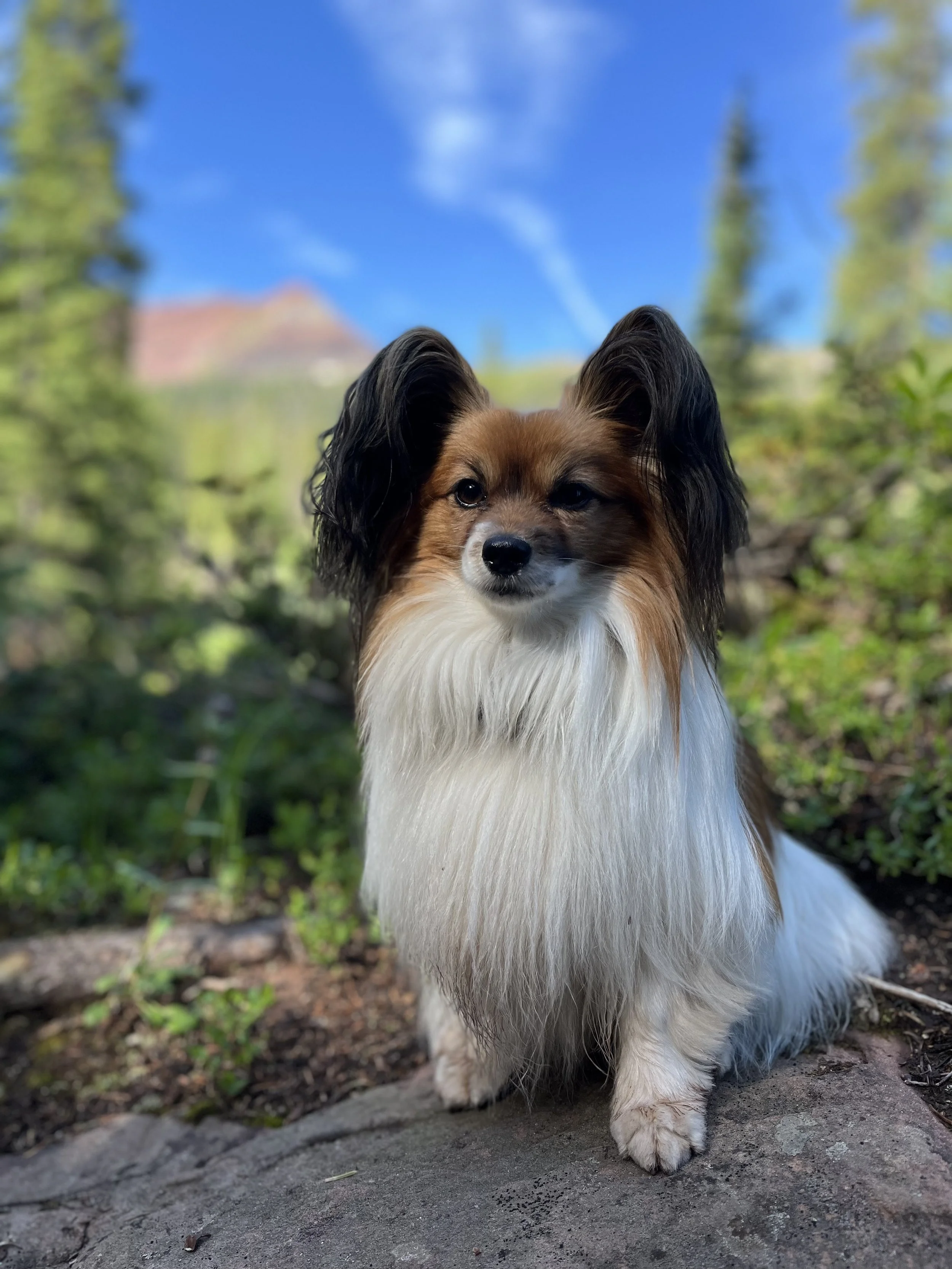Puzzle Me, Please! - Part 4
By Taylor Heid
We get asked all the time what toys we would recommend to keep dogs busy at home! Our last blog post about different enrichment toys for pups was back in 2019 on DIY projects at home. Previously, we also posted Part 1 and Part 2 blogs on our store-bought suggestions. However, store-bought enrichment toys have taken off in the last 5 years with more creativity and a focus on dog behavior. Did you know sniffing and licking is a calming behavior for our dogs? So not only can we keep them busy, but now we can help them in facilitating self-regulation through encouraging these natural behaviors.
There are so many options that it can be overwhelming to know how to choose which type of toy will be best for your dog! We recommend first looking at what your dog seems to enjoy, both with their current toys and in their natural self-soothing behaviors. If your dog had their choice of activities, do you think they would most like licking, working at an interesting food puzzle, sniffing, or chewing?
For example, I observed that my dog, Riley, had been licking frequently in the evenings. She was displacing this need onto inappropriate items (her fur/paws or furniture!). Once I realized licking can be a self-soothing behavior I jumped on the internet to find some licking toys to help transfer this behavior to more appropriate items that would serve the self-soothing purpose even better!
It can take a little trial and error to discover what toys serve your dog’s needs best and which they enjoy the most. Don’t get discouraged! The most important thing to consider is what gives your dog the most benefit on top of some fun.
Here is our updated list of enrichment toys that get the thumbs up:
These are affiliate links. Summit does receive a small “kickback” if you purchase via the links below, at no additional cost to you.
Lickables
Licking is a natural calming behavior. Toys that encourage licking can be great to cure boredom and simultaneously help your dog regulate their many emotions! Here are two different toys that promote calming licking behaviors.
LickiMats - There are so many to choose from! They can serve many different purposes, such as adding a suction cup for baths. Collect them all! Here are one and two examples.
Pupsicles - These can be more of an upfront investment, but I think worth it for the long run. I am enjoying how easy it is to make the pupsicle treats at home. You can buy pre-made ones for ease, but you can also create your own with the treat tray to accommodate allergies and make low calorie treats for everyday use. Here is the most popular pupsicle on the market by Woof.
Feeders
New designs of feeder bowls are coming out constantly. I think it is fun to have different designs so when your dog has mastered one, you can switch it up to keep them stimulated. Here is one from Outward Hound I am excited about. It is definitely on my wish list for Riley, as she could use a new challenge.
We have always been a big fan of SodaPup’s durable treat dispensing toys (we even keep them in stock in our training room)! Recently, SodaPup has come out with a whole new collection of feeder bowls. They have created many new intricate designs, but the cool thing is these bowls can also be used for other activities, similar to the lick mats. Make sure to check out their instagram for so many ideas! And a bonus: they are from Boulder, Colorado! Here are some of my favorite new designs: Honeycomb & Great Outdoors
Tip: If you aren’t sure what to fill your food-based enrichment toys with, there are many store bought options. Check out your local pet store for squeeze pouches or other pre-made dog treats made specifically for filling enrichment toys. You can also look for dog-friendly recipes online, or keep it simple with just some kibble in a layer of water and freeze it! Freezing all your treats is a great way to up the difficulty of a toy and make it last longer!
Sniffing Toys:
You may remember when snuffle mats started taking off around the pandemic. These were crafty DIY options for stuck at home play. If you aren’t familiar, a snuffle mat is anything that encourages sniffing behaviors (another naturally calming behavior). At first, this was commonly done through fabric in fun designs to hide the treats in. They were such a big hit that they have become more commonly manufactured. Here are a few examples of how snuffle mats are being taken to the next level: Themed Mat & Roll-Up Snuffle
Chewing toys:
Lastly, we have the classic chewing toys. Benebone has taken the lead for me when it comes to chewing toy brands. Just when you thought there couldn’t be any more designs, they consistently come out with new shapes and flavors to keep it interesting for dogs. I personally really appreciate that Benebone provides unique flavors, which helps my allergy dog who can’t have the typical dog flavors; like chicken, beef, and pork. Here is Riley’s current favorite from Benebone, but make sure to browse all their new bones: Fishbone
It is important to evaluate the difficulty of toys your dog needs. Some toys come with varying difficulty levels, like puzzles. Start with level 1 and work your way up to prevent frustration. Even if your dog masters level 1 immediately, it will still give them the confidence to keep at it when the difficulty is raised. Always observe your dog with a new toy to ensure they are playing with it appropriately and safely.
The point of all these toys is to enrich your dog in different ways (encourage being calm or using brain power as a form of exercise), and it is a bonus that your dog stays occupied and distracted. We also recommend sitting with your dog while they are playing and having fun for a great bonding opportunity too!
Did we miss any of your favorites on the list? Tell us in the comments!
Happy puzzling!
















